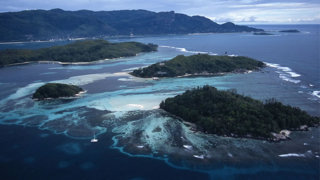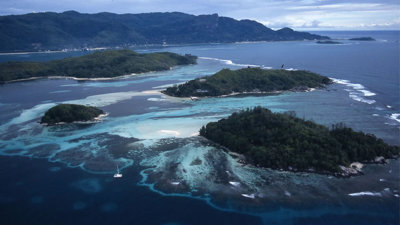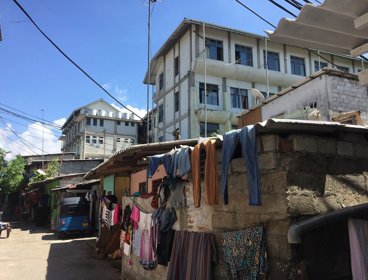Between 1977 and 2001 the Society ran 11 major multi-disciplinary overseas field research programmes. All of these have contributed to conservation and development priorities at government level. These projects were funded with the assistance of major corporate donors, charitable donations and research grants.
Working only at the invitation of host governments and in close co-operation with local scientists and educational establishments, the findings from these projects were presented first in the host country, to enable results to be of benefit to local conservation and development priorities.
List of past RGS field research programmes
- Migrants on the Margins, Zimbabwe/Somaliland/Sri Lanka/Bangladesh (2015-2020)
- Shoals of Capricorn Programme, Western Indian Ocean (1998-2001)
- Jordan Badia Research and Development Programme (1992-1996)
- Mkomazi Ecological Research Programme, Tanzania (1993-1998)
- Middle Hills Project, Likhu Khola, Nepal (1991-1998)
- Brunei Rainforest Project (1991-1992)
- Kimberley Research Project, Australia (1988)
- Maraca Rainforest Project, Brazil (1987-1988)
- Oman Wahiba Sands Project (1985-1987)
- Kora Research Project, Kenya (1983)
- International Karakoram Project, Pakistan (1980)
- Gunung Mulu (Sarawak) Expedition, Malaysia (1977-1978)

Key publications
- Collyer, M, Hammond, L (2021) Migrants on the margins: final report. Royal Geographical Society (with IBG); https://doi.org/10.55203/JTLD8758. Available to download (see below).
- Shoals of Capricorn Programme Field Report 1998-2001: Marine science, training and education in the western Indian Ocean. Edited by Juliet Burnett, Jessica Kavanagh and Tom Spencer. Published by RGS, London (2001), 280 pp., ill., diagr., charts, maps. ISBN 0-9076649-90-4. Available from RGS-IBG priced at £25.
- Mkomazi: The Ecology, Biodiversity and Conservation of a Tanzania Savanna. Edited by Malcolm Coe, Nicholas McWilliam, Graham Stone and Michael Packer. Published by the RGS, London (1999). 608 pp., map. ISBN 0-907649-75-0. Available from RGS-IBG priced at £25 (student price £15 - please provide name of college and course with order).
- Arid Land Resources and their Management; Jordan’s Desert Margin. Edited by Roderic W. Dutton, John I. Clarke and Anwar Munir Battikhi. Published by Kegan Paul International, London (1998), 300 pp., ill., diagr., charts and maps. ISBN 0-7103-0612-1. Available from Kegan Paul International, P. O. Box 256, London WC1B 3SW, United Kingdom. Tel: +44 (0)20 7580 551. Priced at £125.
- A Tropical Rainforest: The nature of bio-diversity in Borneo at Belalong, Brunei. Earl of Cranbrook and David S Edwards. Co - Published by Sun Tree Publishing Ltd, Singapore and RGS, London (1994), 390 pp., map, tables, diagr., glossary, plates, ill. ISBN 98-10055315. Out-of-print.
- The Journal of Oman Studies: Special Report No:3, The Scientific Results of The Royal Geographical Society’s Oman Wahiba Sands Project 1985-1987. Edited by Dutton, R.W. & Bray, D.A. (1988), 576 pp., map, table, diagr., ill. and bibliography. ISSN 0379-0703. Available from RGS-IBG priced at £40.
- Tropical Rainforest Research – Current Issues. [Brunei Project]. Edited by D.S. Edwards, W.E. Booth and S. C. Choy. Published by Kluwer Academic Publishers, London (1994), 566 pp., ill. ISBN 0-7923-4038-8. Available from Kluwer Academic Publishers, 241 Borough High Street London. SE1 1GB England. Tel: +44 (0)20 7940 74945. Priced at £186.50.
- Maraca: The Bio-diversity and Environment of an Amazonian Rainforest. Edited by Milliken, W. Ratter, W. and James, A. (1998) Published by Wiley, 528 pp., maps, diagr. ISBN: 0-471-97917-1. Available from John Wiley & Sons, Ltd, Customer Services Department, 1 Oldlands Way, Bognor Regis, West Sussex, PO22 9SA. Tel: +44 (0)1243 843294. Priced at £135.
- Kora: An Ecological Inventory of the Kora National Reserve, Kenya. Edited by Coe, M & Collins, M (1986) Published by the RGS. 340 pp., plates, maps, figures and tables. Available from RGS-IBG priced at £25.
- The International Karakorum Project Volume 2. Edited by Miller, K.J. Published by Cambridge University Press, Cambridge (1980), 687 pp., maps, tab., figs., ill., ISBN 0-521 26-3395. Available from RGS-IBG priced at £40.
Prices include UK postage.
To purchase any of publications listed above, you can request of pre-payment invoice by email: explore@rgs.org
Downloads
You can download final reports and research publication bibliographies from past field research programmes below.

